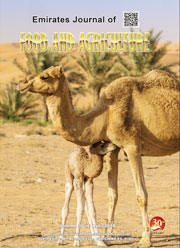EFFECT OF VARIOUS PROTEIN SOURCES IN FEED ON THE FATTY ACID COMPOSITION OF ADIPOSE DEPOTS IN LAMBS
DOI:
https://doi.org/10.9755/ejfa.2015.04.037Keywords:
Adipose tissue, Bulgaria, Diet composition, Fatty acids, LambsAbstract
The effect of inclusion of different protein sources-sunflower meal, rapeseed meal and dry distillers’ grain with solubles (DDGS) on the fatty acid profile of subcutaneous, intermuscular, omental and perirenal fat was studied in male lambs of Bulgarian Dairy Synthetic Population. The presence of sunflower meal in the diet of the lambs led to highest content (P<0.05) of C16:0 in the omental fat while C18:0 displayed lowest content in the perirenal fat of the lambs fed DDGS (P<0.05). The content of C16:1 in the intermuscular adipose tissue was significantly (P<0.05) affected by the dietary treatment. It was highest in the rapeseed meal fed lambs and lowest in the lambs that consumed DDGS. Significant influence of the diet on C18:1 was observed in subcutaneous and omental fat (P<0.05) as its content was highest in the group fed rapeseed meal and lowest in the DDGS group. The lambs fed DDGS containing diet showed significantly increased content of C18:2 and the total amount of polyunsaturated fatty acids in the subcutaneous (P<0.05), intermuscular and omental fat (P<0.01) as well as in the perirenal fat (P<0.001) and decresead content of the total saturated fatty acids in the omental and perirenal adipose tissue (P<0.05). Rapeseed meal led to substantially higher content of C18:3n-3 in the four depots when compared to the other two protein sources. These results could suggest that the inclusion of rapeseed meal and DDGS in the diet could be used to positively manipulate the lipid profile in lamb adipose tissues.










 .
. 